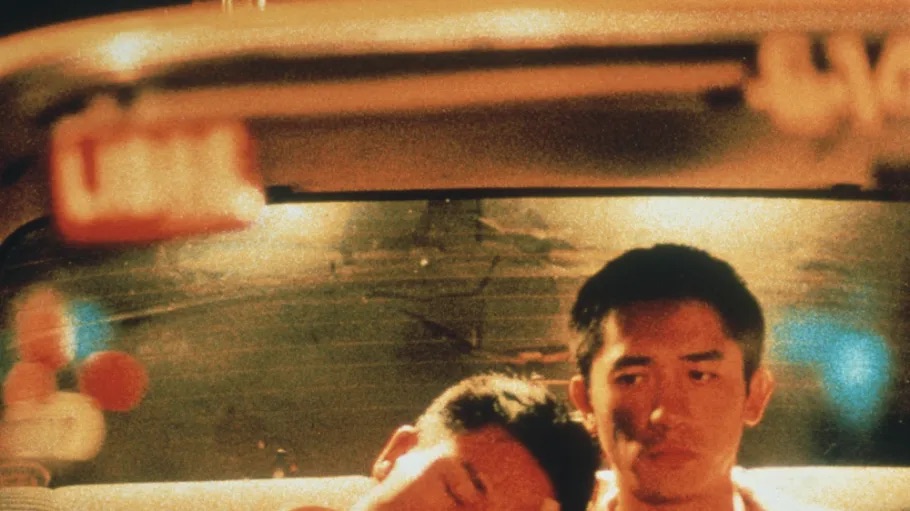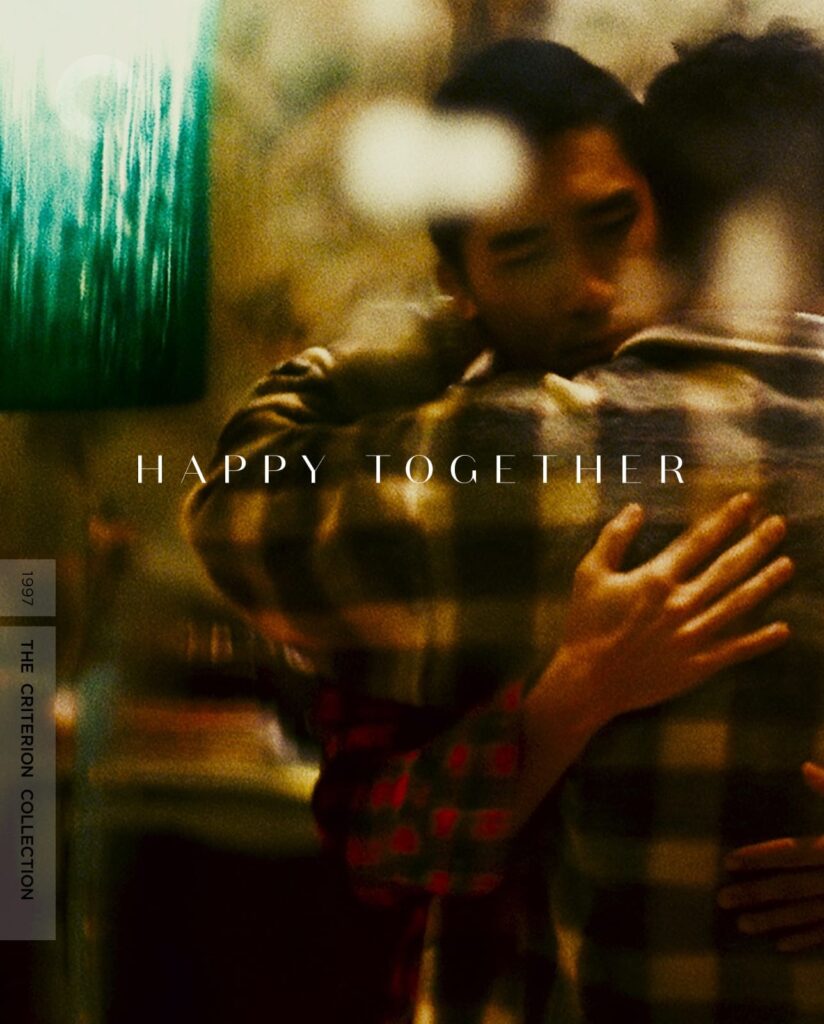by Camden Nguyen
Happy Together is a film that technically fits within the queer road trip genre by qualifications of having a road trip from China to Argentina in the movie as well as involving queer characters throughout; however, it misses a lot of the essence of queer road trip films (QRTFs) that we have come to expect as the genre developed. It is a deeply cynical and lonely film that contrasts starkly against other other QRTFs, even those that include less optimistic narratives such as My Own Private Idaho or The Living End. Due to this difference in outlook, Happy Together provides a framework for looking at what we expect from QRTFs and why we come to expect certain things from “queer” films.
Wong Kar Wai has spoken on Happy Together in interviews, and has said he wishes the film not be viewed as a “gay film”, and is rather a “story about human relationships and somehow the two characters involved are both men”. This statement encapsulates the role of queerness in Happy Together, where it has almost no narrative importance; events happen involving queer characters, but queerness is not a relevant cause or factor in these events. When we come to think of movies involving queer characters or themes, we look for relevance or ways that queerness comes to shape the message of the movie, but here it is almost the opposite case, where the lack of narrative focus is providing a new commentary on queerness.
We want it to have relevance, to have meaning because of the context and history of which it exists in our world. This idea relates to the ideas of assimilation and difference presented by Jagose in Chapter 3 of Queer Theory. Queerness exists in Happy Together outside of the realm of difference, where Jagose notes difference as a “crucial term for queer [knowledge] and modes of organization” (77) and presents Morton’s notion that it is a “rejection of Enlightenment views”. (77) The portrayal of queer in Happy Together is about as assimilationist as it could be, with even minor background characters interacting with Fai and Po-Wing in homosexual ways without a single word being said about it. Being different or other is an essential part of queer identity and organization as we understand it, and the lack of difference in Happy Together really shines when also comparing it to other QRTFs with similar plot lines, such as To Wong Foo, Thanks for Everything! Julie Newmar; in which the message of difference and learning through interaction is core to the message and themes to the film compared to the lonely Happy Together.
Ultimately, the idea of queer in movies comes down to capturing identities, and the impact of identities on narrative. The road trip aspect of many films can be an equivalent to journey and self discovery, we see this in films such as Carol or The Living End, where characters learn more about their own queerness through the road trip, but the queerness in Happy Together begins and ends at the start of the movie. Fai does not grapple with this part of his identity, even the parts that involve people outside of Po wing, their interaction does not change in any meaningful way due to the queer identity of both characters.
Happy Together does not derive its message and commentary on queerness on traditional themes such as difference and understanding through interaction, but that does not mean that it has nothing to say about queerness or identity. Happy Together is a very isolated film, almost the entirety follows Fai and Po-Wing, and it is in these isolated moments that it speaks to a quieter part of queer turmoil.
Let’s start over. The single statement is central to the film, as Fai and Po-Wing try to start over and over, they begin to distort time itself and create this never ending cycle that repeats without fail. The distortion of time is a concept relevant to queer identity, as many queer individuals are unable to express their queerness or lack queer experiences at some points in their life, leading to a sense of losing time or not being out of the timeline of human experience. The timeline of queer experience is different for every individual, and the distortion of time and cycles of starting over in Happy Together reflect that idea of the idealized queer self versus the actualized one. The idealized queer self is one that exists only in hindsight, one that fully understood itself in time and had the space to express itself and the opportunities to collect queer experience; a wish for time to align. The struggle between Po-Wing and Fai can be seen also as an internal struggle for Fai, he is the one that changes. Po-Wing’s idyllic wish to start over and live a clean queer relationship without issues is the idealized queer self, one that keeps itself in the past and is ultimately unattainable. Fai’s decision to fight and break the cycle of starting over is a representation of queer actualization through acceptance of the reality that the ideal (a healthy relationship with Po-Wing or an ideal past queer self) is unattainable, no matter how attractive or desirable these ideals are. Coming to terms that queerness happens very differently to all and being trapped in yearning for ideals prevents actualization and further improvements and opportunities for queer happiness, seen also with Fai’s friendship with Chang.
Bibliography
Jagose, Annamarie. Queer Theory: An Introduction. NYU Press. 1997.


Leave a Reply